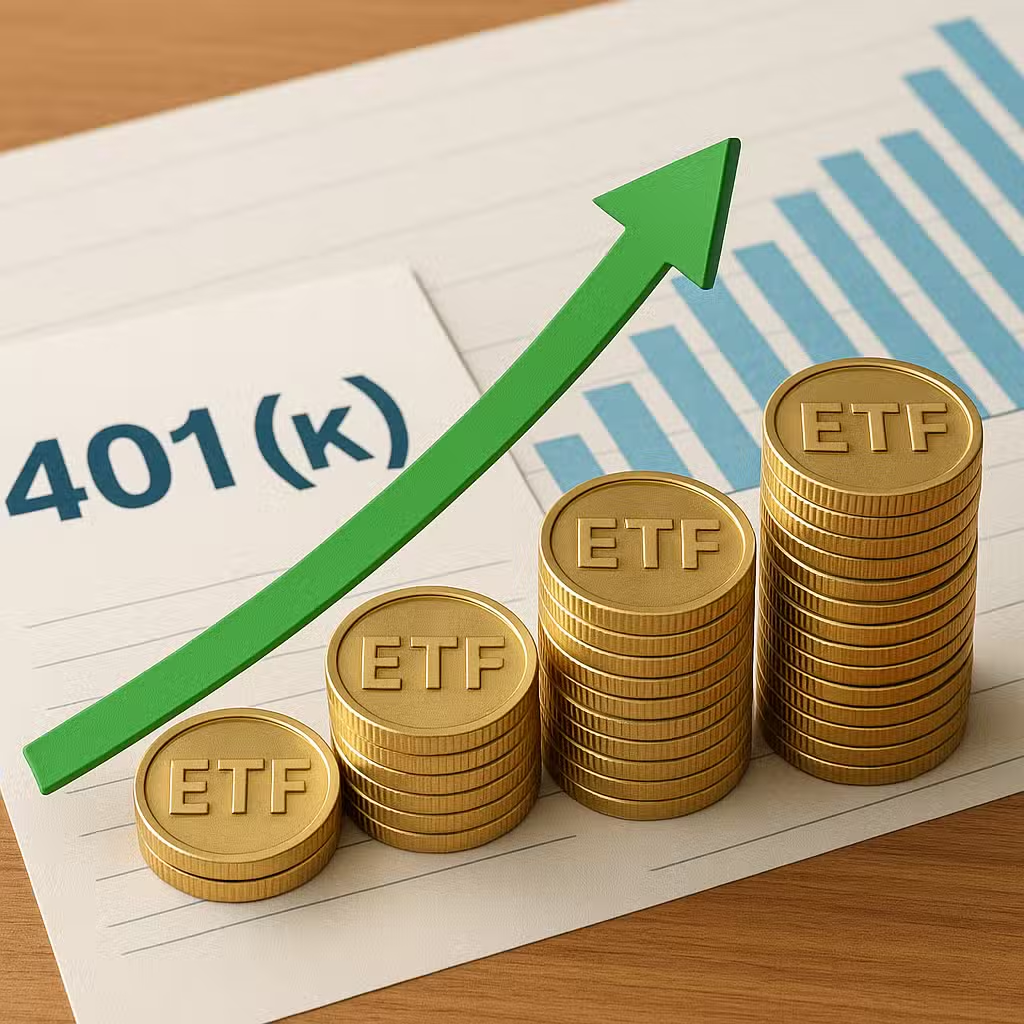Low-Cost ETFs Could Soon Join 401(k) Plans, Offering Investors More Affordable Options
Imagine if your favorite pizza place started letting you order slices instead of a whole pie—suddenly, you have more choices and can try new flavors. That’s what’s happening in the world of investing, thanks to a new rule from the SEC that’s shaking up how mutual funds and ETFs work together.
What’s Changing and Why Investors Should Care
The Securities and Exchange Commission (SEC) now lets fund companies create new kinds of investments: ETF share classes for traditional mutual funds. This could bring a wave of new ETFs to the market, giving investors more options and possibly lower costs.
But State Street, one of the biggest ETF managers, is flipping the script. Instead of just making more ETFs, they want to offer mutual fund versions of their popular ETFs to retirement plans like 401(k)s and 403(b)s—places where ETFs haven’t been common before.
This matters to investors because it could make it easier (and cheaper) for people saving for retirement to access the same low-cost, flexible funds that big investors use.
Pros: Why This Could Be Great
- Lower Costs: State Street manages about $1.7 trillion in ETFs, so they can use their size to offer funds with very low fees. For example, their SPDR Portfolio S&P 500 ETF (SPYM) has an expense ratio of just 0.02%.
- More Choices for Retirement Savers: Many 401(k) and 403(b) plans only offer mutual funds. By turning ETFs into mutual funds, State Street could let more people invest in things like the S&P 500, technology stocks, or even gold.
- Trading and Tax Efficiency: ETFs use something called “in-kind” trading, which means they don’t have to sell investments when big investors cash out. This can keep costs down for everyone in the fund.
- Big Market Opportunity: The U.S. retirement market is huge—about $4 trillion, according to State Street. That’s a lot of people who could benefit from these changes.
Cons: What Investors Should Watch Out For
- Not All Benefits Apply: Some perks of ETFs, like tax savings, don’t matter as much in retirement accounts because those accounts are already tax-deferred.
- Complexity and Fragmentation: There are already lots of different fund types—mutual funds, ETFs, collective trusts. Adding more choices could make it harder for investors to pick what’s best for them.
- Competition Is Fierce: Other giants like Vanguard and Fidelity are already offering super-low-cost index funds and ETFs. Fees are dropping across the board, so State Street will have to work hard to stand out.
- Slow Rollout: Because of a government shutdown, new fund approvals are on hold. Investors may have to wait to see these new options in their retirement plans.
How Big Is This Shift?
To put it in perspective, U.S. ETF assets have grown from less than $100 billion in 2000 to over $8 trillion by 2024, according to Statista. This shows just how popular ETFs have become, and why making them available in more retirement accounts could be a game-changer.
Bulls vs. Bears: The Debate
- Bulls (Optimists) say:
- This gives regular investors more access to the same tools as big institutions.
- More competition means lower fees and better choices for retirement savers.
- State Street’s scale and experience could help them offer better products.
- Bears (Skeptics) say:
- The differences between mutual funds and ETFs may confuse investors.
- Tax benefits of ETFs don’t really matter in retirement accounts.
- It’s unclear if these new funds will really be better than what’s already offered by Vanguard and Fidelity.
Investor Takeaway
- Watch for new fund options in your 401(k) or 403(b)—these could offer lower fees or new ways to diversify.
- Compare expense ratios and look for funds with long track records and low costs.
- Don’t get distracted by fancy new products; focus on your long-term plan and diversification.
- Ask your retirement plan provider about new offerings and how they might fit your goals.
- Stay informed—regulation and fund choices are changing fast, and what’s available today could look very different in a year.
For the full original report, see CNBC







